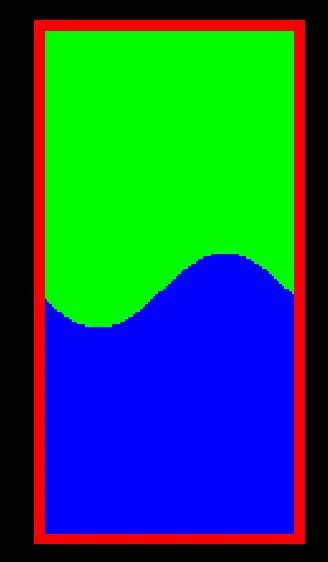Multiphase flow simulations
Multiphase flow problems are abound in both nature and technology. They span diverse applications ranging from small scale processes such as, nutrient transport across a membrane at the cellular level, to the large scale phenomena such as, water cycle and atmospheric condensation. In the field of engineering, almost every discipline encounters multiphase systems. Certainly multiphase systems are more complex than single phase systems, owing to issues such as, surface tension, interfacial stability, diffuse nature of the interface etc. Some of the commonly used mesh-based methods are Finite Difference, Finite Volume and Finite Element in conjunction with volume of fluid or Level set method. However, the reconstruction and interface tracking between the fluid phases is an expensive computational step, requiring complex algorithms. Furthermore, ensuring mass conservation, is a major problem in certain grid based. On the contrary, smoothed particle hydrodynamics (SPH) offer the advantage of automatic interface tracking, as well as conservation. In the recent years, a number of SPH models for simulation of multiphase flows have been demonstrated to reproduce the flow phenomenons to varied levels of accuracy. The following videos shows SPH simulation of some of the popular multiphase flow benchmark problem.


Rayleigh Taylor instability
Bubble rise in a water column

Non-Boussinesq Lock exchange problem

Sloshing under vertical excitation

Sloshing under horizontal excitation